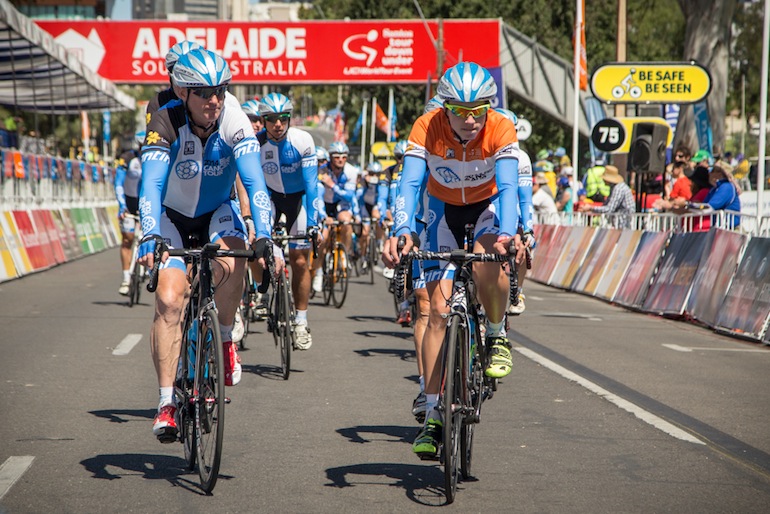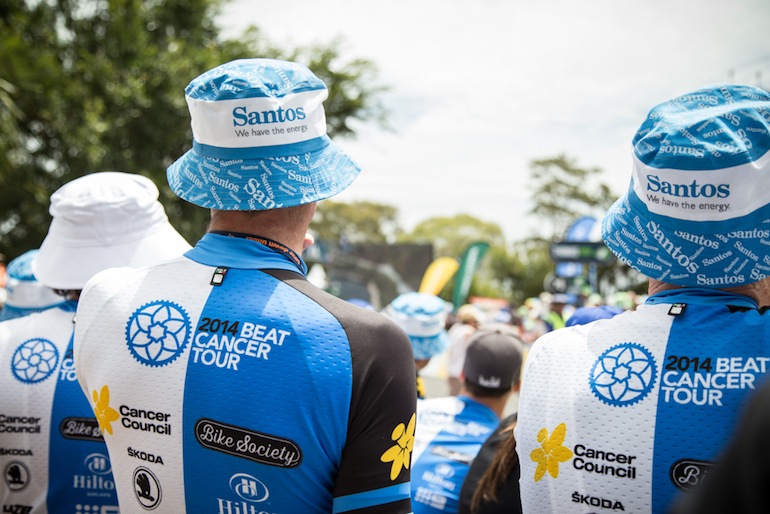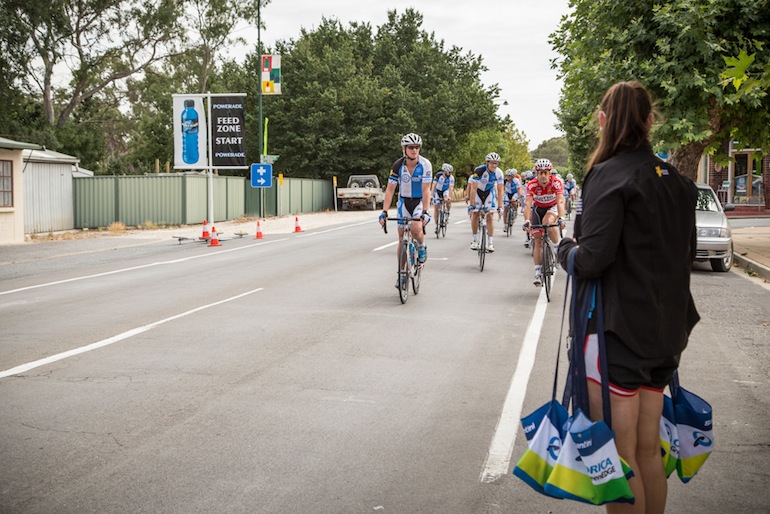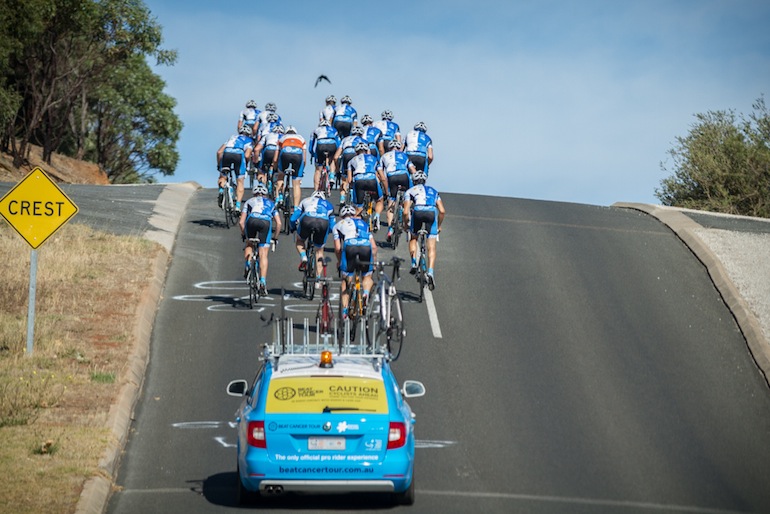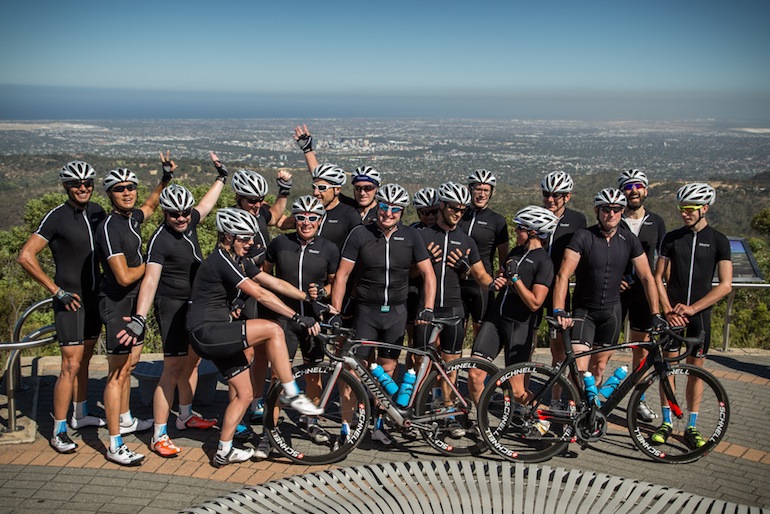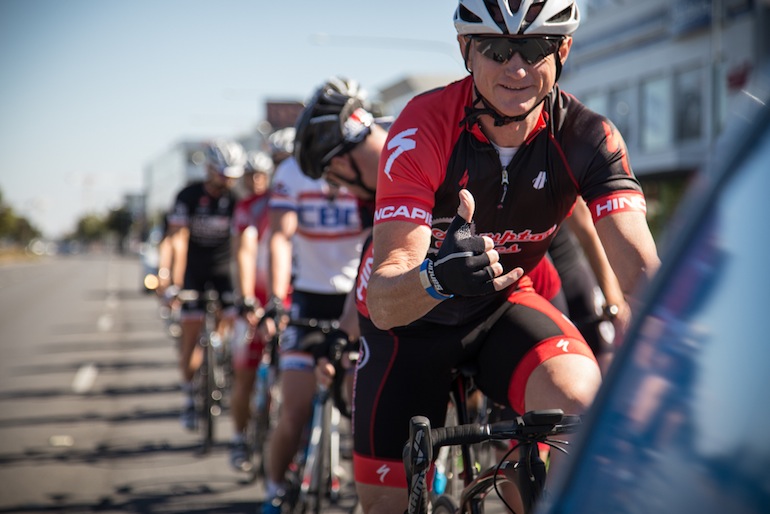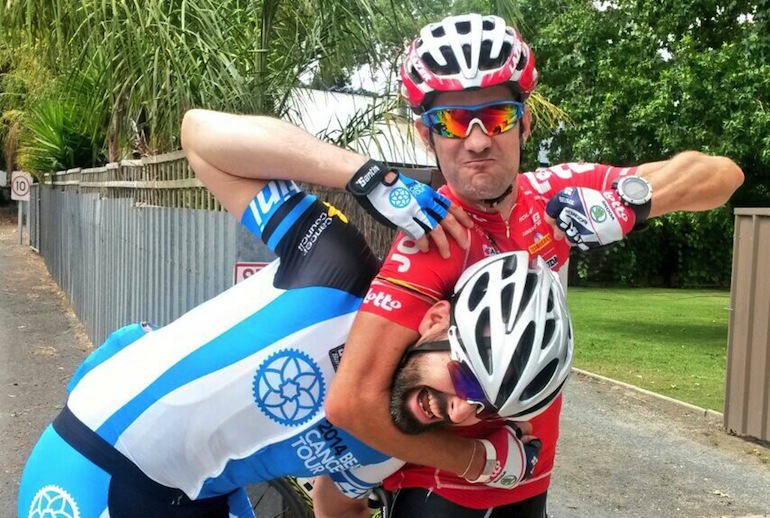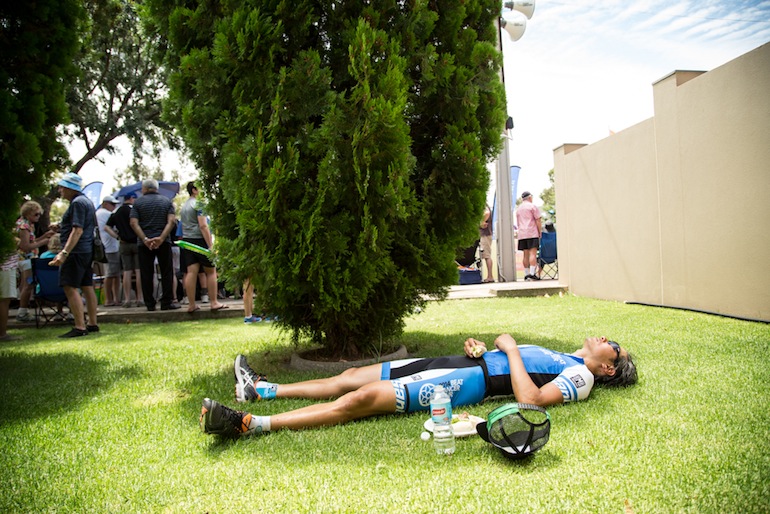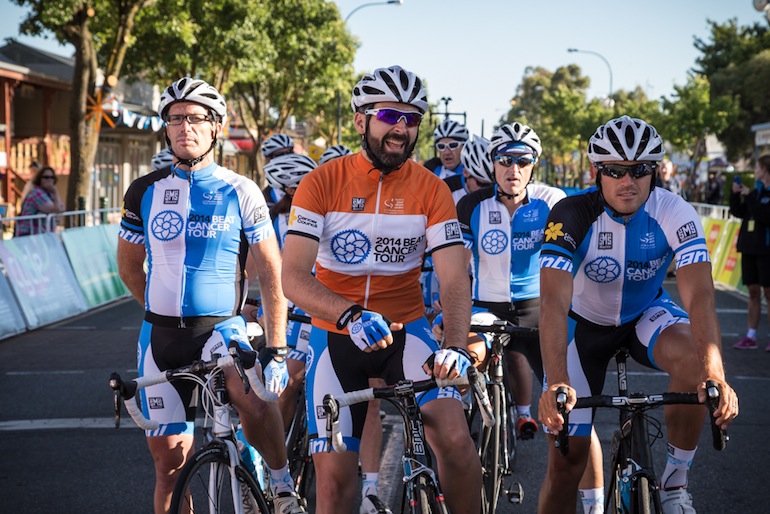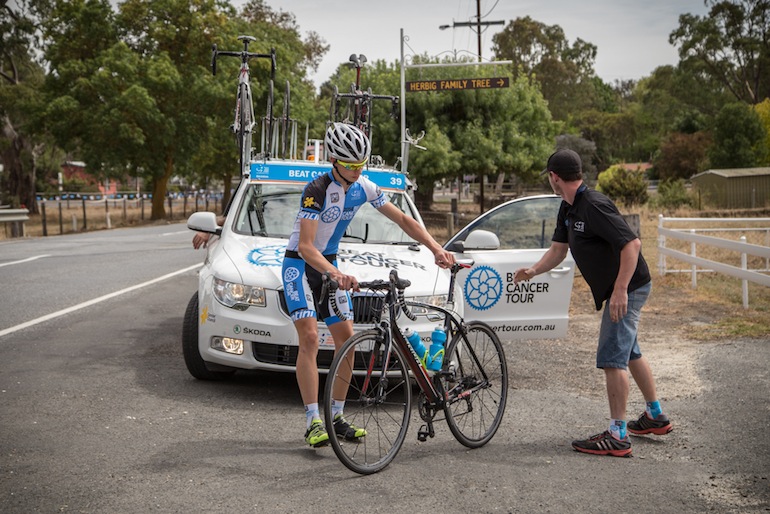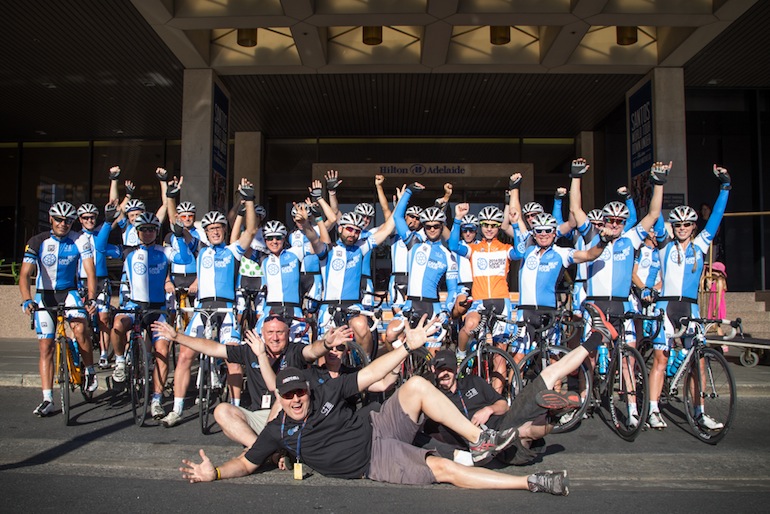On September 12 2011 a good friend of mine, David Michael Hall, suffered a serious seizure, not dissimilar to what I imagine an epileptic fit would be like.
David was 54 years old, a hard-working handyman, with four beautiful daughters (one still in high school), one grandchild, and a wife, Bev. I had known him for many years on a personal level and also through work.
The day after the seizure David discovered that he had an aggressive form of glioma, or brain tumour. By the Friday of that same week he was in for brain surgery to try and remove the tumour, requiring 57 stitches to his head to close everything back up again.
What followed was an epic year-long battle with countless treatments to buy more time with his family, but ultimately the prognosis was not good. David’s condition declined rapidly, the cancer spread, and his physical and mental condition declined. The cancer eventually took David’s life on Tuesday October 23 2012, just over a year after the seizure.
I am sure many people reading this have been directly affected by, or have had a loved one with cancer, and I assume your feelings would have been the same as mine: helplessness. What on Earth could I do to help?
In May 2012, before David passed, I wrote him a letter. In this letter I asked if he would allow me to raise money in his name, towards a cancer charity. I hoped to take something I love doing, for someone I love, to help fight this horrible illness.
In a strange way I felt that if I set myself an extremely difficult physical challenge, pushing myself further than before, my suffering on the road would in some ways reflect David’s own battle. More importantly, it would hopefully make something good of a terrible situation.
I only saw David once after I wrote this letter. He came to visit me at work and we had a good chin wag. I was stoked to hear that he accepted my offer to raise money in his name. Later on, one of David’s daughters told me that my offer had lifted his spirits when there was very little light in his life, and this by itself validated of my decision.
While I can’t recall much detail from our ‘blokes chat time’ that day, there is one memory that will never leave me. As David went to leave, he had a hint of a smile under that moustache of his but a sad look in his eyes. As I showed him out the door I shook his hand and his eyes welled with tears. I casually said “We will catch up and I’ll make you another coffee soon.”
While David must have been 100% sure, I think I was numb to the fact that after this simple handshake I would never see David again.
Initially my intention was to organise my own ride but with a very busy business to run, and a wife and daughter at home, it was just too much to build an event from the ground up. Instead I kept a lookout for something that fit the criteria.
One day around August 2012 I stumbled across a social media post about a “Beat Cancer Tour”. An event that involved riding the entire 865km of the 2014 Tour Down Under course from start to finish for the benefit of the Cancer Council.
I contacted the organiser, Bade from Connectsport, to discuss the event and from the outset his excitement was obvious. Bade has for a long time been nurturing a dream to run an event in tandem with a UCI WorldTour race and he had been given the green light from the organisers of the TDU and Events SA. He himself had lost both parents to cancer, and I think that experience has given him a passion and dedication for his job that is unrivalled.
The event required that each rider pay a $1,000 registration fee, make a personal donation of $3,500, and raise a minimum of $12,000 for the Cancer Council. For me, not having done a fundraiser before, this was quite intimidating. There there was the fact that my biggest week on the bike to that point was 470km, while the event was close to 1,000km and 11,000 meters of climbing.
With David in the back of my mind, I pushed hard for five to six months to raise funds for the Cancer Council. I started a small blog to get his story out there, started a fundraising page with the help of the Cancer Council, and also ran a raffle.
The generosity and support provided to me for David was absolutely astounding and in the end I was able to raise a total of $16,000 for the Cancer Council. Don’t get me wrong, fundraising is bloody hard, but if you’ve got a good reason to do it, it can really motivate you to reach your goal.
So with funds raised, it was time to hit the road.
I am sure many club levels riders have seen a UCI WorldTour race and wondered how they would fare riding it as well. While we weren’t riding at breakneck speeds I think what we experienced was the next closest thing to riding the actual race.
We shared rooms with another rider, had team briefings every night, had matching kit, lead and follow cars, on-road mechanical support, and importantly domestiques in the bunch who were essentially there to bring us water bottles/food. The captain on the road was Chris ‘Nugget’ Halley, and wow did this guy work hard.
On top of dropping back for bottles, it was Chris’s job to sprint up the road many times a day to stop traffic and let us through intersections. This is easy in theory, but just try pulling up on a main road or roundabout in your lycra with B-doubles heading towards you at 100km/h! I don’t know how he did it, but literally every time the traffic would stop, and through we would go.
Greg Henderson, while recovering from a knee op, came out with us for stages 2 & 3. Given his mother in law is terminally ill with cancer, this was a subject close to his heart, and we felt privileged to have him out on the road with us. It was funny watching people do double-takes as we rolled by.
There was an extremely funny moment in Stirling on stage 2, as we came through for the second lap, when a security guard spotted Hendo in his Lotto kit, and must have thought he was a “hubbard imposter” in the group. The security guard proceeded to virtually tackle him to the ground as we rode through the start/finish line. No doubt this bloke would have been a little embarrassed afterwards to find out he nearly injured one of the greatest lead out men in the world of cycling!
The experience out on the road was amazing. As the days went on, the crowd seemed to recognise the the Beat Cancer crew more and more, and the cheers and support we received made for an electric atmosphere. Some days we would roll through the finish just before the big race. For me the ride in to Stirling was the best.
Every rider had a good day and a bad day. My bad day was day three — my body was not used to riding any more than two days in a row. I was miserable, tired, sore, and my legs were heavy like lead, but as the day went on, with the support of my team mates, things slowly got better and better until I was helping drive the bunch by the end.
The one aspect that the organisers hit on the head in their quest to let us ‘live like a pro’ was the fatigue. The schedule was absolutely gruelling — there was basically something on at all times, and it seemed like there was virtually no down time. From what I understand, this is exactly how it is for the pros.
Before the event I had committed to providing a blog update every day and as a result I was up late every night getting that done after all of the scheduled events. Sometimes I’d only get about four hours of sleep, which might not sound that bad, but the fatigue racks up quickly after a solid six hours’ riding every day.
As the week went on, the team gelled more and more, working out the right pace to keep everyone together, when to offer words of encouragement, and when to provide a hand in the back while on a long climb. It wasn’t about racing, or smashing riders, it was about working together, spreading the word for the Cancer Council and enjoying the experience.
Each day a rider would be awarded the ochre jersey, and the KOM jersey. The ochre was awarded to the rider that showed the most heart, that helped out the team, that offered words of support and so on. The jersey wearer also got the honour of leading the team home across the finish line first.
I was privileged to wear the ochre on the first day for my fundraising efforts for David. While the ride wasn’t a race, riders were given the opportunity to have a crack up the KOM every day, with the polkadot jersey going to the quickest climber.
There were some truly inspirational people on the ride, and you can’t help but feel buoyed by the positivity when you are surrounded by such amazing people. It also really puts your own life and perceived worries into perspective.
One of the riders, Fiona, had a very aggressive form of cancer, major surgery, and is now cancer free. Only a short time after her surgery she went to Europe and rode L’Etape du Tour. Devastatingly Fi also lost her mother to cancer only a few years before.
Her mother’s final gift to her was her life, with Fi’s cancer being detected through screening that she had organised as a result of losing her mother. This exampled pointed out to me that out of every negative there is always a positive. Fiona’s positivity towards life after facing such adversity is infectious.
The father of another rider, Michael, was diagnosed with a brain tumour and round the same time Michael himself had an accident that nearly claimed his life. He broke his neck, had bleeding on the brain, and had to wear a halo. Michael only got back on his bike in August, and his recovery was truly inspirational.
And the guy we called “Mowen” was given a 2% chance to live for more than two years back 2011. He is now cancer free, and is about to embark on a challenge to ride Brisbane’s Mt Coot-tha 50 times in 24 hours to raise more funds for the Cancer Council.
This will equate to 470km, and a vertical ascent equivalent of climbing from sea level to the summit of Mt Everest … twice. I would normally see such a challenge and gaffaw, but after meeting him, riding with him, and seeing his epic Strava profile, I am confident he can do it.
On the way to McLaren Vale for the last stage around Willunga, I had a quiet cry in the bus. I am generally not an outwardly emotional person, but this whole process of creating a legacy for a good friend who had passed away was catharsis for the soul.
Since undertaking this epic journey, it has given me the opportunity to recognise that for many of us life is so busy we never really get a chance for true reflection and introspection. Raising the funds, running the blog, and doing the hard yards on the road gave me the time I needed to truly reflect on the loss of David.
My father sent me a short email on the eve of completing the Beat Cancer Tour. He, like me, isn’t one to openly express his emotions:
“I have read your hurt and great loss and can only state you were lucky to know him. You will find as you progress through your 80 to 90 years of life people you love and cherish will move to the other side of the curtain. Rejoice in the knowledge you knew them and from that time on you will without effort carry a small part of them in your soul.
We all know riding bikes is good for our health, for seeing new places, and meeting new people. But I never would have dreamt that my bike could help me deal with grief, connect with such inspiring and positive people, and raise money to help other people and families dealing with cancer.

